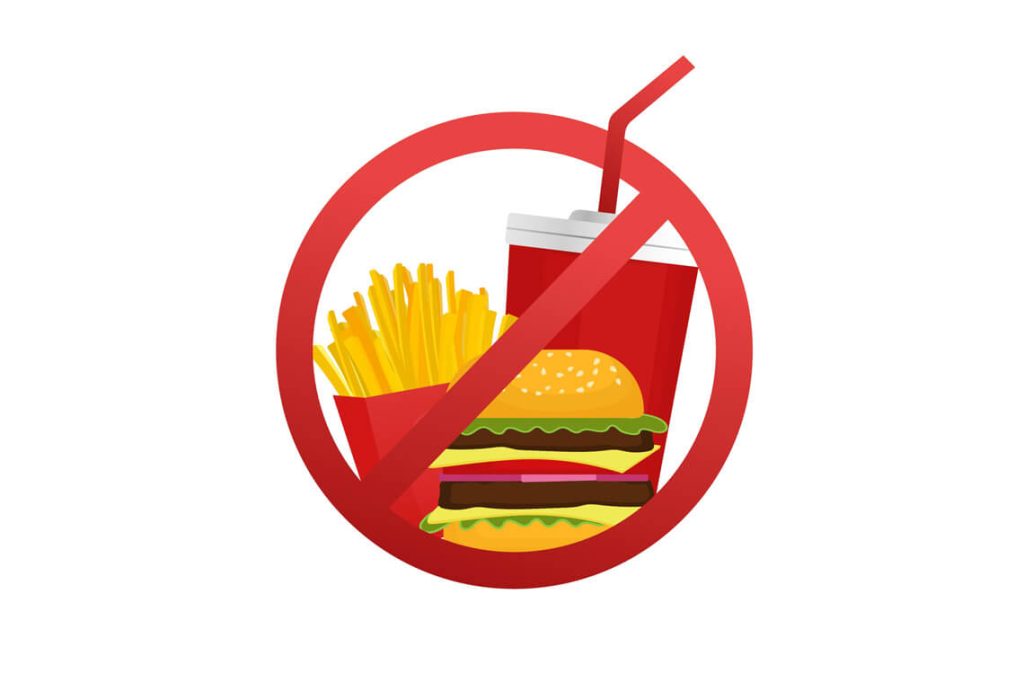In a bold move to control Malaysia’s childhood obesity pandemic, the Ministry of Education (MOE) is formally banning the sale of twelve types of food and drink in school canteens and cooperatives.
The list includes various junk and fast food items like sugary or sweetened drinks, energy and isotonic drinks, processed snacks, 3-in-1 instant noodles, and fast-food-style items like nuggets and sausage products.
On top of that, schools have been instructed to report any food vendors operating outside school gates who offer these prohibited items.
The purpose of this nationwide “junk food ban” is to pave the way towards a healthier future and to reduce children’s exposure to ultra-processed, high-sugar, high-salt foods during school hours.
As a parent, that sounds good on paper. But let’s look at the realities of this ban and what it could spell for your kids.
A Cause for Concern
We don’t need to be rocket scientists to see what the stakes are. Rising childhood obesity, diabetes and lifestyle diseases are genuine challenges in Malaysia and worldwide.
In a screening of over 22,800 schoolchildren in Kuala Lumpur, Selangor and Negeri Sembilan, roughly 29.4% of primary school children and 26.8% of secondary students were found to be overweight or obese.
The consequences go beyond the physical. Obese children are more likely to experience mental health challenges, low self-esteem, social isolation, and even depression. Experts warn that children often “feel very small” despite their size and may turn to comfort foods, worsening the cycle.
So yes, healthier food in schools is one part of the solution. But is it enough?
Is a Food Ban Really the Answer?
On one hand, there’s a solid case to be made for the ban.
On the other hand, who should decide what a child eats? The state, the school administrators, or parents?
When the government bans certain foods, some parents might take this the wrong way. Shouldn’t that be our choice at home or via packed lunches?
One more thing: the more rules the government imposes, the more we risk children rebelling or finding workarounds. Whether that’s sneaking in snacks, bringing money, or roaming outside school during breaks. All of a sudden, you have a black market for junk food.
Changes Start at Home
If schools stop selling sausages or sugary drinks, that’s a helpful nudge.
But it won’t change a child’s whole diet if at home they’re surrounded by biscuits, soft drinks and deep-fried snacks.
Schools and governments can only do so much; parents must always take the lead when it comes to their child’s health. Here are a few practical tips:
- Model real behaviour: Eat fresh, whole foods yourself. Let children see you choose fruit over biscuits.
- Involve kids: Let them help with meal planning or grocery shopping. Teach them to read sugar, salt and fat labels.
- Pack smart snacks: If school offers healthier fare, complement it – don’t compete with it.
- Educate gently: Talk about why sugar, salt and processed foods are harmful, without turning every meal into a lecture.
- Make treats occasional, not default: Giving some treats is fine – but don’t let them dominate.
You can’t outsource a child’s diet to schools and regulators entirely. Healthy habits are formed over years, at home, at the table, and in conversations.
Awareness Over Prohibition
Schools should certainly comply with the ban, monitor canteens, and collaborate with local health or nutrition agencies to audit menus. Many already do under MOE or MOH programmes like MyBFF@school.
But there must be flexibility too, “food bans” alone won’t teach why foods are bad. Schools should pair bans with nutrition education, gardening programmes, cooking classes, and student engagement.
Additionally, enforcement must be consistent. A school that bans sugary drinks but allows an unscrupulous vendor just outside the gate is undermining its own mission. Local councils, health departments, and education authorities must coordinate.
And finally: codes should be reviewed and refined, not permanently fixed. Food science, health guidelines, and local preferences all evolve.
A Cultural Reset of Health
The MOE’s restaurant-style ban on 12 food and drink categories is ambitious. It’s a statement: schools will no longer be havens for junk food. But a ban alone does not transform dietary culture.
If you’re also a parent of school-going children, let’s see this as an invitation, not an imposition.
Use it to kickstart conversations at home. Reinforce healthy choices, not by shaming children but by empowering them.
At the end of the day, healthier schools and a healthier generation will happen only if regulation meets guidance and if what children learn in class is mirrored in the kitchen at home.
The state can set boundaries, but the real change begins with us.
Disclaimer: The information provided in this article is for informational purposes only and should not be considered as medical advice from Motherhood. For any health-related concerns, it is advisable to consult with a qualified healthcare professional or medical practitioner.
For more insightful stories and fun recipes, stay tuned to Motherhood Story!
